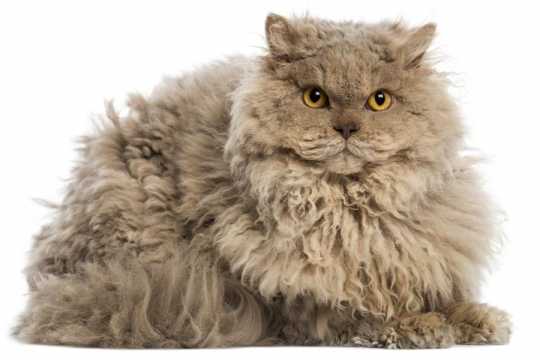Selkirk Rex cats do not have any special nutritional needs, however you might want to look for a food that includes higher levels of Omega fatty acids to support healthy skin and keep their coat looking its best.
The Selkirk Rex cat has a completely unique coat with lots of curls and a soft, thick texture. This extra-special coat calls for a bit of care, but less than you might imagine. You’ll want to check for tangles and comb them to prevent painful mats from forming; at the same time, too much brushing and combing can give the cat’s fur a wavy appearance rather than allowing the curls to stand out.
Consider brushing your cat’s teeth and think about keeping their toenails trimmed. Regular at-home dental care can help prevent periodontal disease and frequent nail trimming can help prevent damage to your furniture, skin, and clothing.
Some – but not all – Selkirk Rex cats produce excess body oil and need occasional bathing. If your cat is among those that requires a bath now and then, be sure to use gentle cat shampoo and allow them to slowly air dry. Using any type of hair dryer might burn the cat’s delicate skin. In addition, it can cause the hair to puff up and give your cat the appearance of a poodle.
Selkirk Rex cats love to play, particularly when they have the opportunity to interact with their humans or feline friends. These kitties have a strong appreciation for jumping and climbing as well; you’ll want to offer a tall cat tower and perhaps a window seat that provides a view of the great outdoors. In addition, your cat will appreciate a few scratching posts, puzzle toys that stimulate curiosity, and other playthings including empty boxes and crinkly paper bags.
Selkirk Rex cats are generally healthy. To date, there are no known genetic issues that affect the breed. Some breeders do screen for potential problems including polycystic kidney disease and hypertrophic cardiomyopathy.
